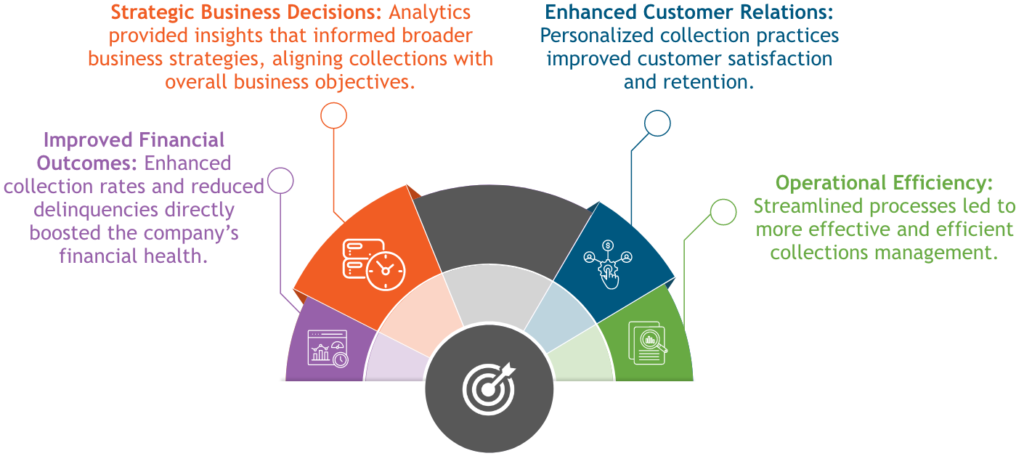
Quick Summary
A subsidiary of a leading non-bank motor company that provides financing solutions for two- and three-wheeler vehicles and is a trusted brand in the country, the finance company needed to strategically apply analytics to transform its collections management, transforming potential financial instability into a streamlined, efficient, and more profitable operation. CRG Solutions used analytics to change financial services operations and boost profits.

About the Customer
The company is a leading non-banking financial company that has a widespread presence across India, focusing on financial products and services aimed at supporting individuals and businesses. The company, which specializes in vehicle and equipment financing, identified the need to manage its collections efficiently across its diverse portfolio.
It became important to adopt advanced analytics methods to optimize and harness data-driven insights to facilitate proactive rather than reactive collections management, transforming collections processes by providing deeper insights into customer behavior, payment trends, and risk factors.

Problem Statement
The company faced numerous challenges, and it became imperative to integrate advanced analytics to enhance the accuracy of delinquency predictions, improve collection strategies, and ultimately reduce financial losses due to bad debt.
The following identified challenges:
- Rising Delinquency Rates: There was an increase in overdue payments, which had a negative impact on the company’s liquidity and profitability.
- Manual and Inefficient Collection Processes: Traditional collection methods were not only labor-intensive but also less effective, lacking the ability to scale or adapt to market changes.
- Data Silos and Lack of Integration: Fragmented systems prevented effective use of existing data, which resulted in delayed or inaccurate reporting and decision-making.

Solution
Analytical solutions were implemented.
The company introduced several analytical initiatives to tackle these challenges:
- Predictive Analytics for Risk Assessment: Utilizing machine learning models to predict which loans were likely to become delinquent based on historical data and borrower behaviors.
- Segmentation Techniques: To tailor collection approaches effectively, break down the customer base into segments based on risk profiles, payment histories, and purchasing behaviors.
- Real-Time Analytics for Performance Monitoring: Using real-time data processing to continuously monitor collection efforts and dynamically adjust strategies based on the latest trends and data insights.
Detailed analytics implementation
- Data Integration and Warehousing: Consolidating data from various sources into a centralized data warehouse to facilitate advanced analytics.
- Custom Analytics Models: Developed bespoke models that provided insights into the likelihood of delinquency, optimal contact times, and the most effective communication channels for individual customers.
- Automated Reporting Systems: Automated the generation of analytical reports that provided regular updates on the efficiency of collection strategies and highlighted areas needing attention.
The adoption of advanced analytics significantly enhanced the collection operations.
- Reduced Delinquency Rates: There was a marked 25% reduction in delinquency rates as predictive analytics enabled preemptive action on high-risk loans.
- Increased Collection Efficiencies: By segmenting customers and personalizing collection methods, the company improved its collection rates by over 20%.
- Operational Efficiencies: Automation and real-time monitoring reduced manual intervention by 40%, allowing staff to focus on strategic rather than routine tasks.

Business Benefits


Leave a Comments
You must be logged in to post a comment.